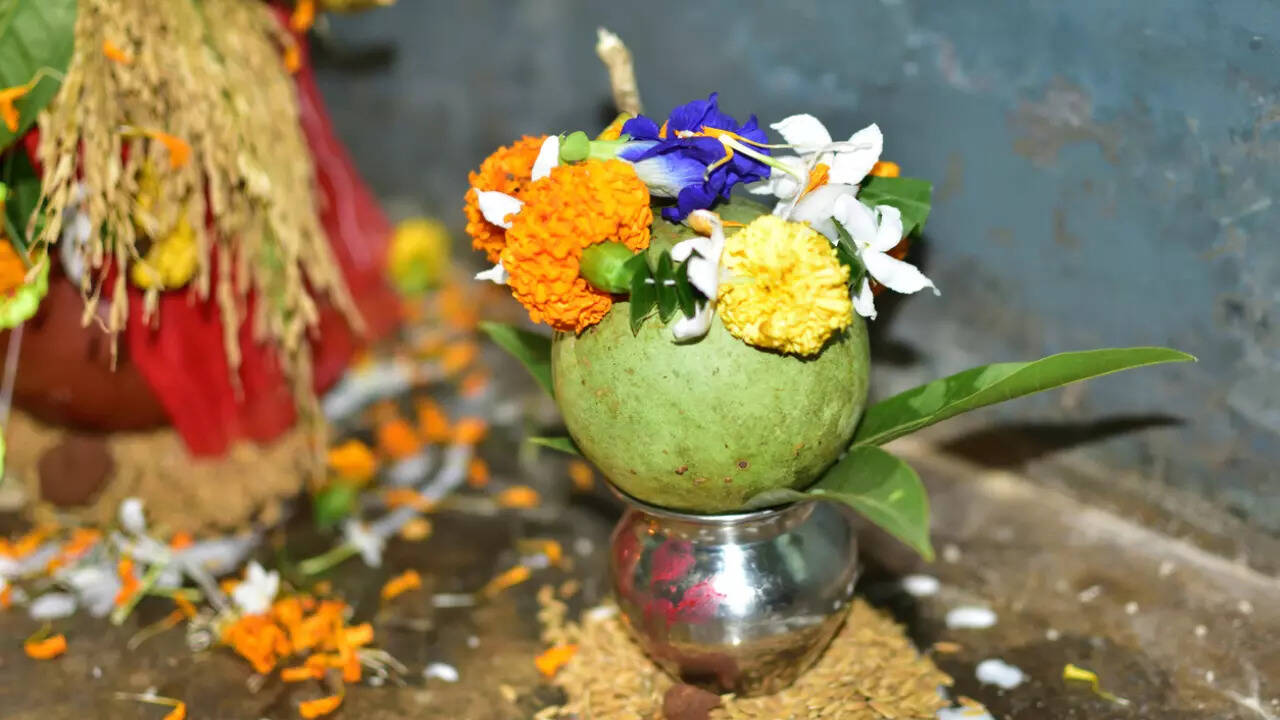Amla Navami 2025: When is Amla Navami, date, time, significance, and what makes amla so auspicious |

India is a land of traditions and festivals. Here, every festival has its own significance and meaning. One such festival is called Akshaya Navami, celebrated exactly 10 days after Diwali. As per legends, this day is considered to be the beginning of Satya Yuga. Akshaya means that which does not decay. It is said that the work done on this day yields everlasting results. It is also known as Ichchha Navami, Amla Navami, Kushmanda Navami, Arogya Navami, and Dhatri Navami. The virtue of fasting on this day brings happiness, peace, harmony, and an increase in the lineage. On the day of Amla Navami, there is a special tradition of worshipping Lord Vishnu and the Amla tree as well. Scroll down to read the details of the festival along with the date, time, and what makes amla so auspicious on this day.Date and timingAkshaya Navami – October 31, 2025, FridayAkshaya Navami Morning Time – 06:32 AM to 10:03 AMNavami Tithi begins – October 30, 2025 at 10:06 AMNavami Tithi ends on October 31, 2025 at 10:03 AMImportance of Amla NavamiAs per legends and scriptures, on Akshaya Navami, Lord Vishnu ended the tyranny of a demon named Kushmanda, after which a Kushmanda vine grew from the demon’s hair. Therefore, it is also called Kushmanda Navami. Kushmanda is commonly known as Petha or pumpkin, and is used as a vegetable. Hence, donations of Kushmanda, or Petha, should be made on this day. Along with donations, worship of Kushmanda with incense, flowers, and unbroken rice grains is also considered auspicious. In addition to Kushmanda Navami, Jagaddhatri Mata is also worshipped on this day in Odisha. Jagaddhatri is a form of Goddess Durga.

Why Amla tree is worshippedOn this day, amla tree is worshipped with camphor and ghee diya. Also, people revolve 108 times in a clockwise direction around the tree to seek blessings of Lord Vishnu. As per legends, eating food under the amla tree on this day helps bring good health, wealth and prosperity in life. And chanting ओम धात्र्ये नमः is also said to be very beneficial on this day.What makes Amla so auspiciousAs per legends, the amla tree is associated with Goddess Lakshmi and Lord Vishnu, symbolizing prosperity, health, and purity. Planting or worshipping the amla tree is believed to bring blessings, happiness, and spiritual merit (punya). During the festival of Amla Navami, devotees worship the amla tree as a divine embodiment of Vishnu and offer prayers beneath it. It is believed that performing rituals under the tree grants longevity, wealth, and spiritual upliftment. Also, amla bears fruit in the most sacred month of Kartik (October–November) and is considered spiritually charged in Hinduism. Eating or worshipping amla during this time is said to cleanse both the body and soul.

Benefits of amlaAs per experts, amla contains antioxidants and has antibacterial properties that help boost the immune system. It also nourishes body tissues and accelerates cell regeneration. It is also a rich source of vitamin C, which helps build the immune system and provides resistance against many diseases, especially those of the respiratory tract.What does Ayurveda say?As per Ayurveda, amla or Indian gooseberry is the “nectar of life”. Also known as “Amalaki”, it is considered a divine medicine that balances all three doshas—Vata, Pitta, and Kapha. And as per Ayurveda, it is believed to nourish and strengthen the body’s ojas. Its regular consumption promotes energy, endurance, and youthful vigor. Amla is classified as a Rasayana, meaning it rejuvenates tissues, supports cellular regeneration, and slows aging. It improves overall health, longevity, and mental clarity. It also enhances Agni (digestive fire) without aggravating Pitta, promoting efficient digestion, nutrient absorption, and gentle detoxification. And the rich vitamin C content, helps strengthen immunity, aids wound healing, and protects against infections and oxidative stress.All Images Courtesy: istock







